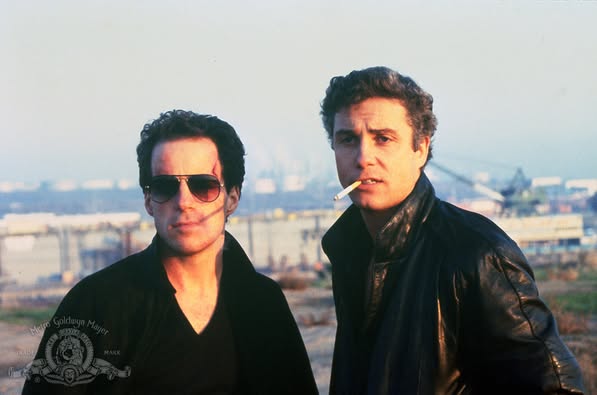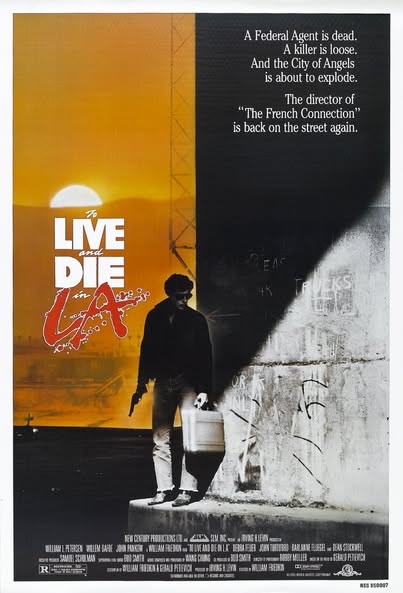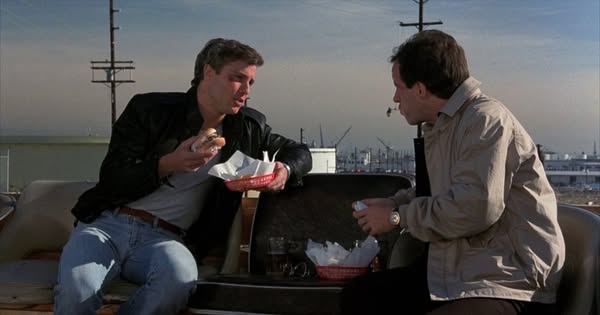To Live and Die in L.A. (1985)

To Live and Die in L.A. (1985), directed by William Friedkin, is a gritty crime thriller that explores the dark underbelly of Los Angeles through the lens of law enforcement and the world of counterfeiting. The film is notable for its intense action, complex characters, and its commentary on morality and the pursuit of justice.
The story follows Richard Chance (William Petersen), a Secret Service agent, who becomes obsessed with bringing down a ruthless counterfeiter named Rick Masters (Willem Dafoe) after his partner is killed during a botched operation. As Chance dives deeper into the dangerous world of counterfeit money, he becomes increasingly reckless, blurring the lines between right and wrong in his quest for vengeance.

Petersen delivers a compelling performance as Chance, portraying a man driven by obsession and desperation. His character’s moral ambiguity is a central theme of the film, as he increasingly resorts to unethical methods to achieve his goals. Dafoe’s portrayal of Masters is equally captivating, embodying a charismatic and menacing figure who thrives in the criminal underworld. The dynamic between the two characters creates a tense cat-and-mouse game that propels the narrative forward.
Friedkin’s direction is marked by a raw and unflinching approach to storytelling. The film features a striking visual style, characterized by its use of natural lighting and a documentary-like realism. The action sequences, especially a high-speed chase through the streets of Los Angeles, are thrilling and expertly crafted, showcasing Friedkin’s background in creating intense cinematic experiences.

The film’s score, composed by Wang Chung, adds to the atmosphere, blending synth-driven sounds with a sense of urgency that complements the narrative’s tension. The music became iconic, further enhancing the film’s cult status.
To Live and Die in L.A. explores themes of obsession, the moral compromises of law enforcement, and the consequences of one’s actions. It raises questions about the nature of justice and the often blurry line between hero and villain. The film’s conclusion is particularly striking, leaving viewers with a sense of ambiguity that lingers long after the credits roll.

Upon its release, the film received mixed reviews but has since gained a following, appreciated for its bold storytelling and stylistic choices. It stands out as a significant entry in the crime thriller genre, showcasing Friedkin’s ability to create tension and complexity.
In summary, To Live and Die in L.A. is a gripping and visceral exploration of crime, morality, and obsession. With its strong performances, dynamic direction, and intense action, the film remains a notable work in 1980s cinema, inviting viewers to reflect on the darker aspects of human nature and the consequences of pursuing justice at any cost.











